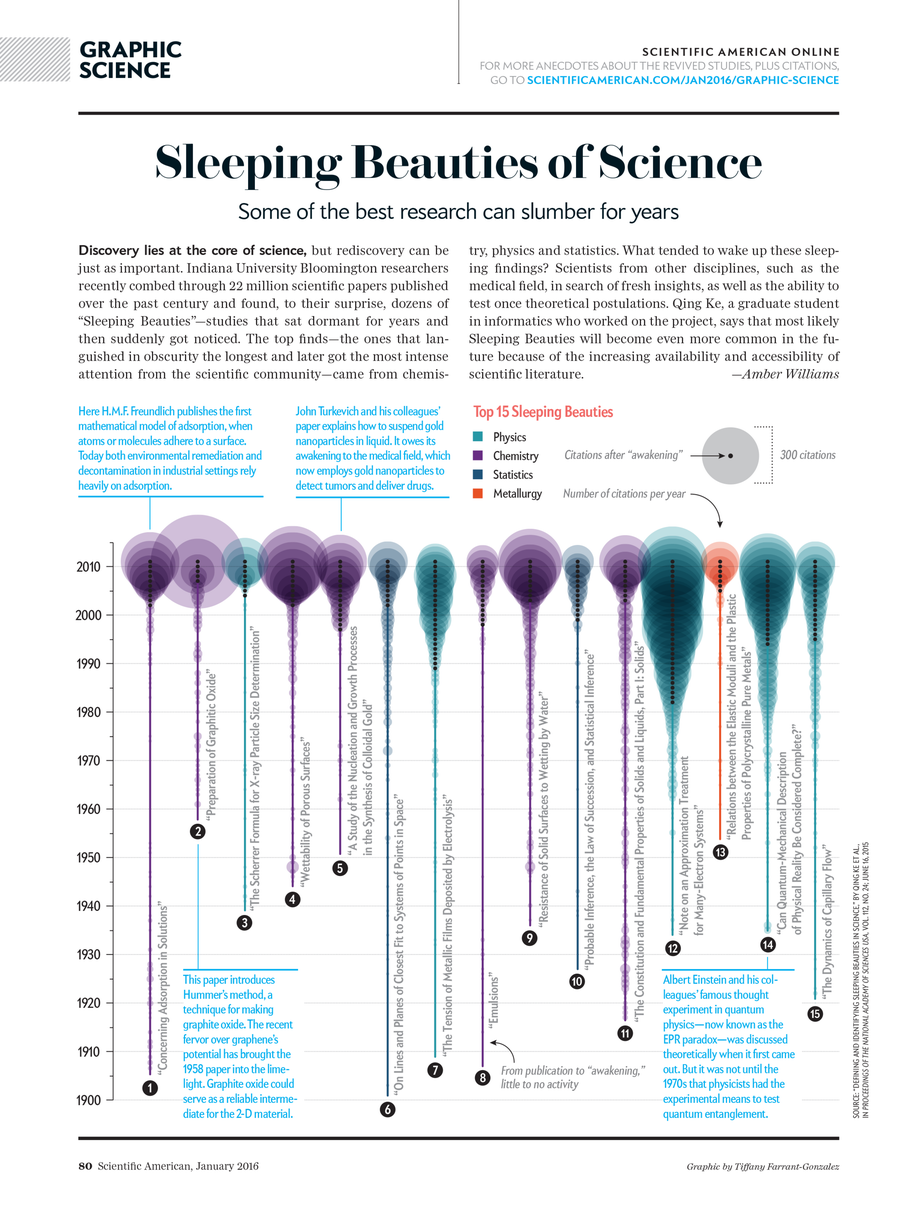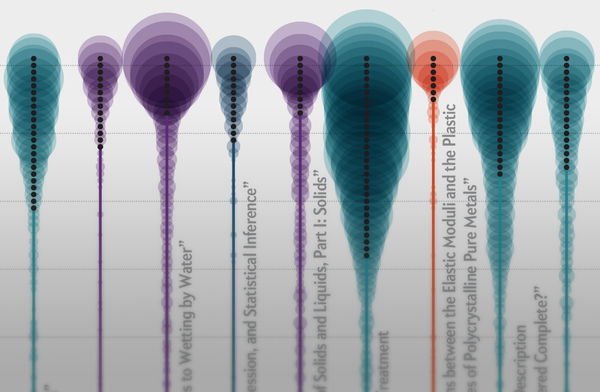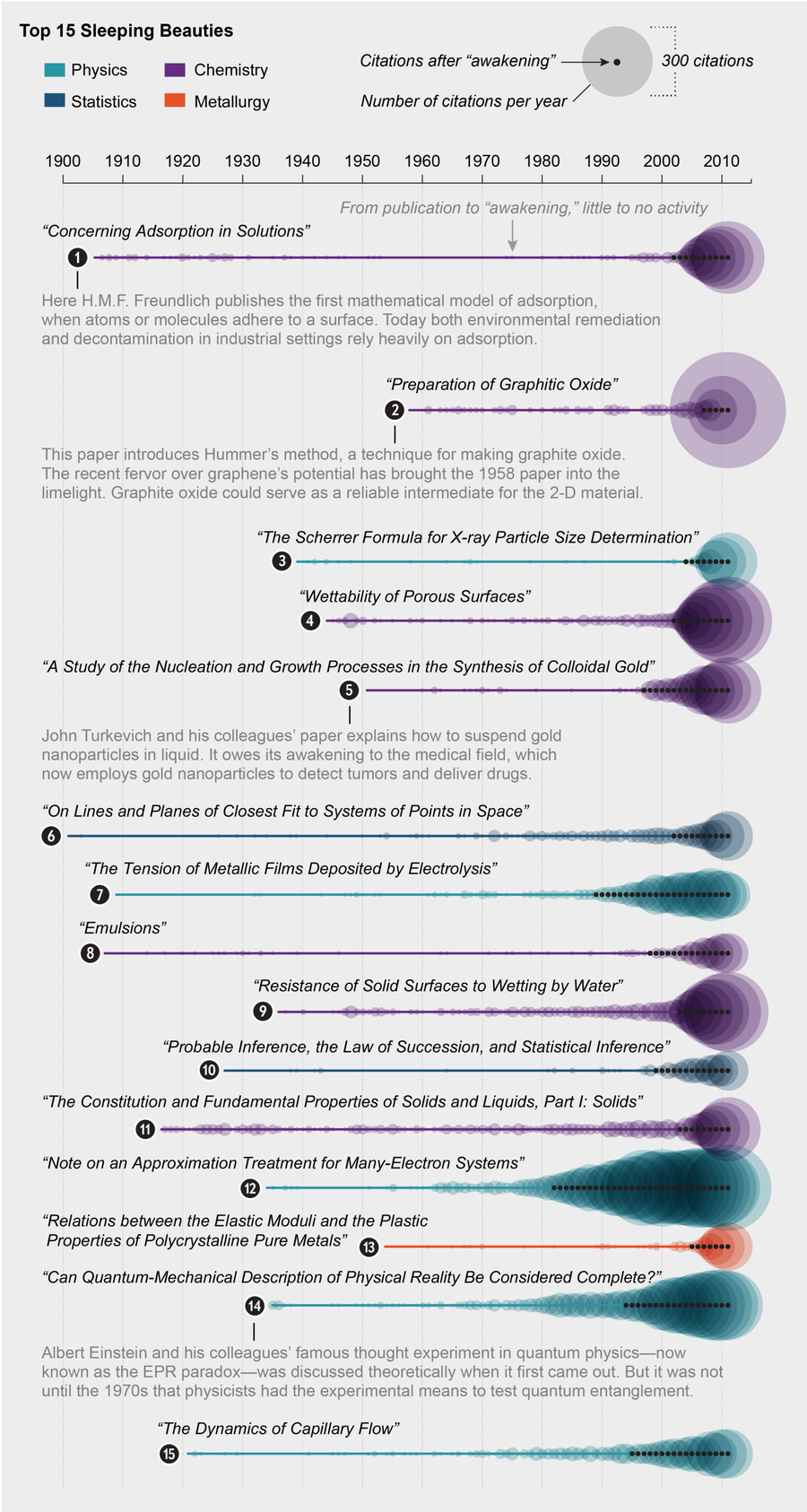This article was published in Scientific American’s former blog network and reflects the views of the author, not necessarily those of Scientific American
The 25th annual Malofiej International Infographics Summit—hosted in Pamplona, Spain by the Spanish chapter of the Society for News Design and the School of Communication at the University of Navarra—concluded last week with award announcements. I’m happy to report that Scientific American won a silver medal in the print category for this page in the January 2016 issue, featuring a graphic by Tiffany Farrant-Gonzalez, text by Amber Williams, and research by Qing Ke, Emilio Ferrara, Filippo Radicchi, and Alessandro Flammini.

Credit: Tiffany Farrant-Gonzalez (graphic)
Here's a version of the graphic optimized for viewing online.
On supporting science journalism
If you're enjoying this article, consider supporting our award-winning journalism by subscribing. By purchasing a subscription you are helping to ensure the future of impactful stories about the discoveries and ideas shaping our world today.
Discovery lies at the core of science, but rediscovery can be just as important. Indiana University Bloomington researchers recently combed through 22 million scientific papers published over the past century and found, to their surprise, dozens of “Sleeping Beauties”—studies that sat dormant for years and then suddenly got noticed. The top finds—the ones that languished in obscurity the longest and later got the most intense attention from the scientific community—came from chemistry, physics and statistics. What tended to wake up these sleeping findings? Scientists from other disciplines, such as the medical field, in search of fresh insights, as well as the ability to test once theoretical postulations. Qing Ke, a graduate student in informatics who worked on the project, says that most likely Sleeping Beauties will become even more common in the future because of the increasing availability and accessibility of scientific literature. –Amber Williams
Over 1,300 entries from 134 media companies across 31 countries participated in the contest. In total, 10 gold medals, 47 silver medals, and 98 bronze medals were awarded in print and online categories combined. Best of Show awards were bestowed upon La Lettura (Italy) for “The Journey of Foreign Fighters” (print), and The New York Times (U.S.) for "Olympic Races Social Series" (online). For a full list of awards [pdf], see the Malofiej website.

